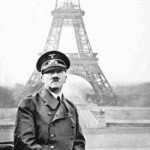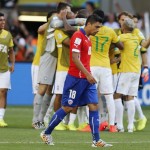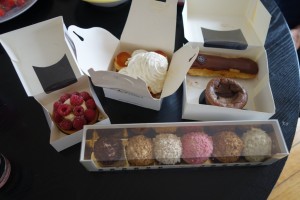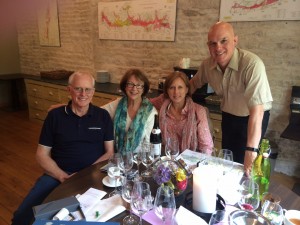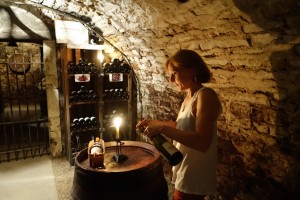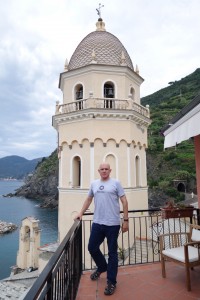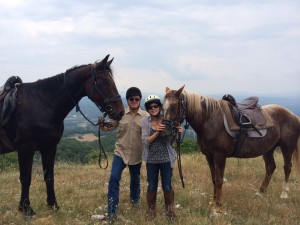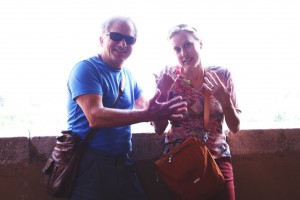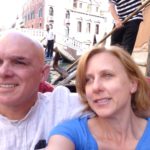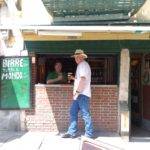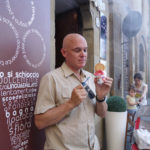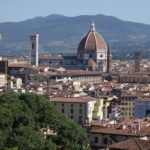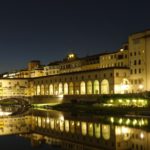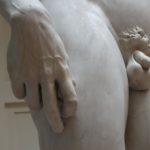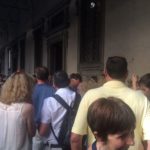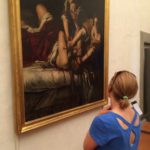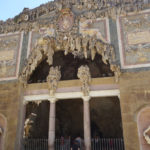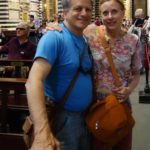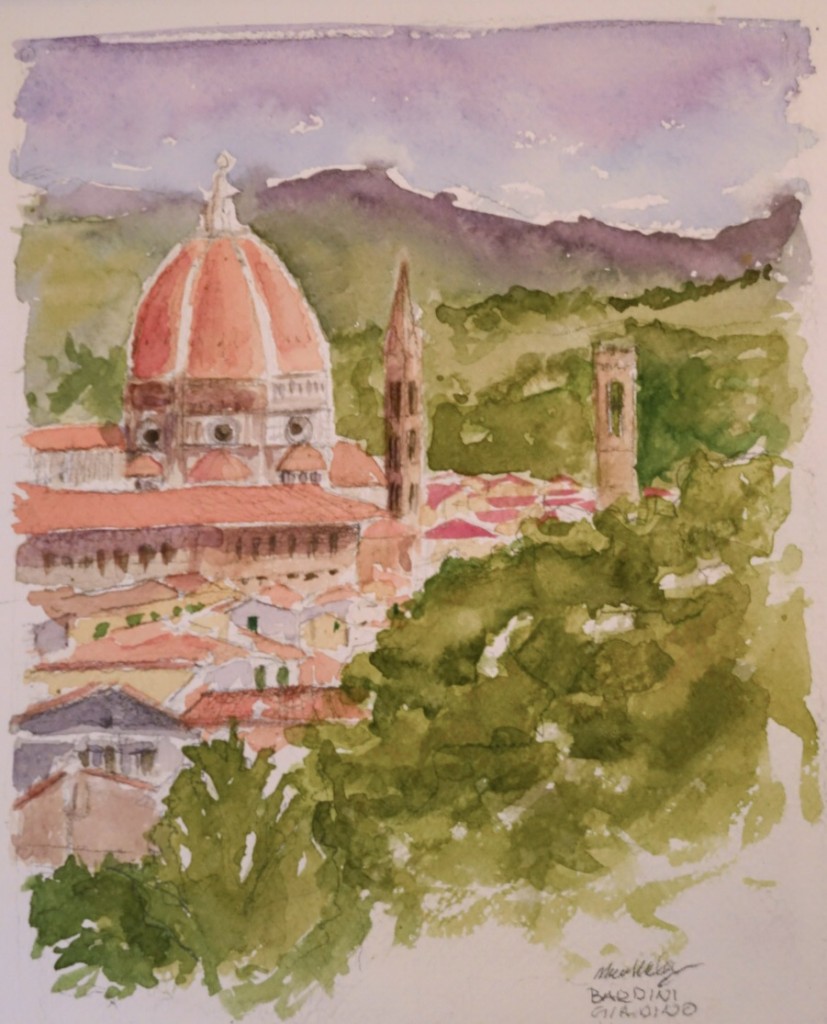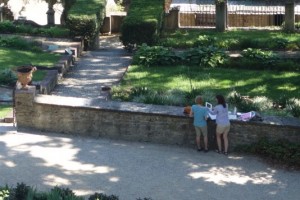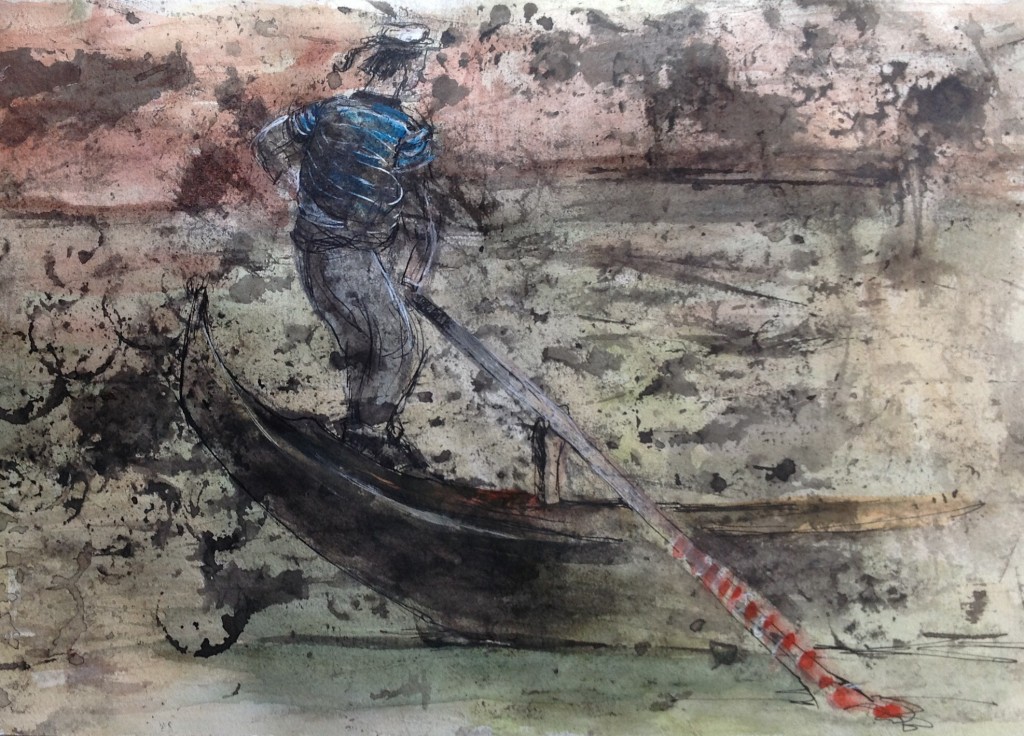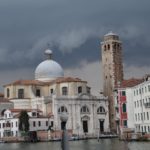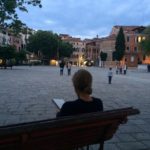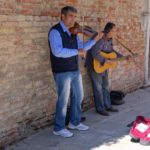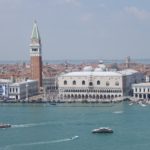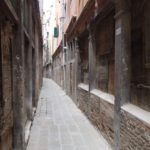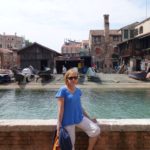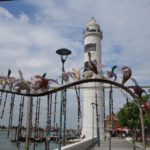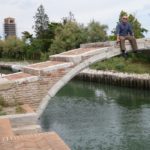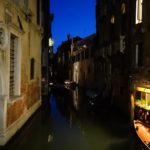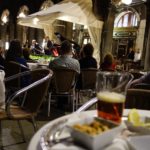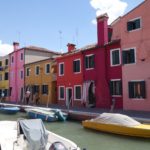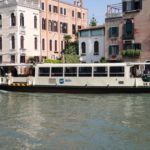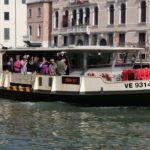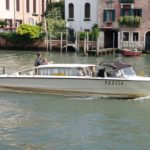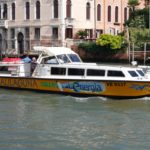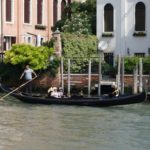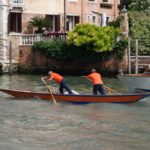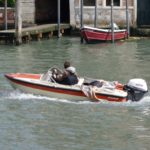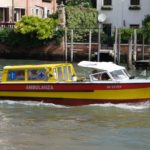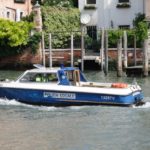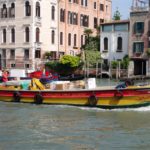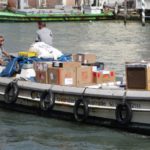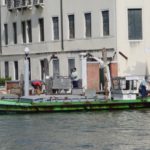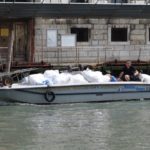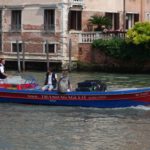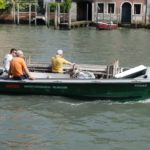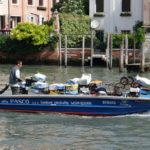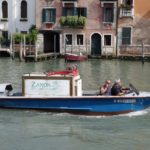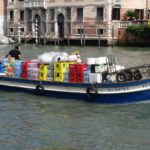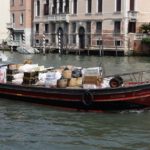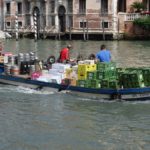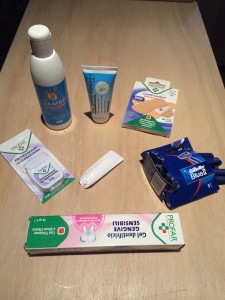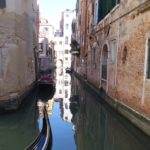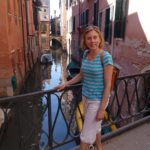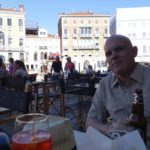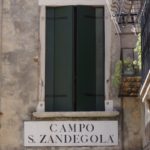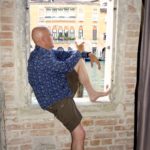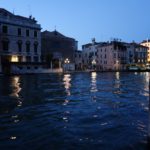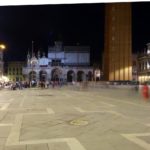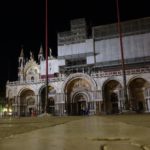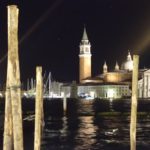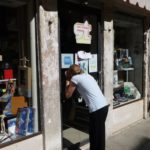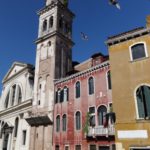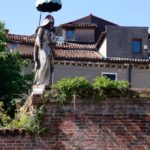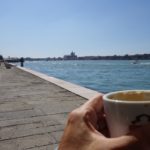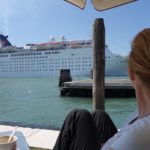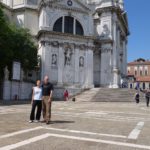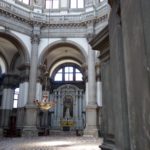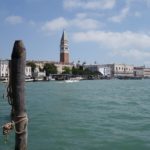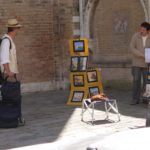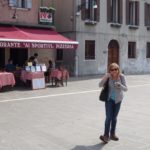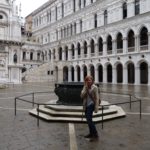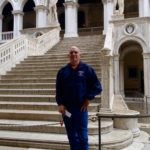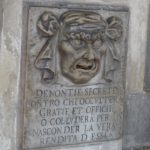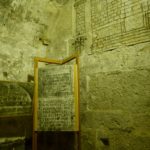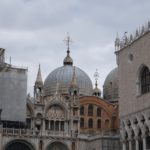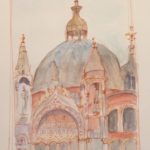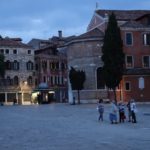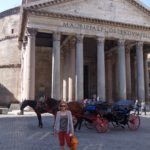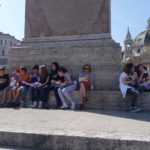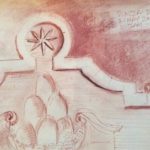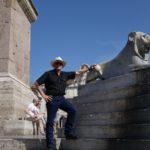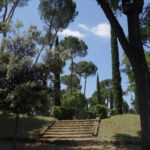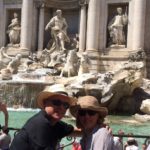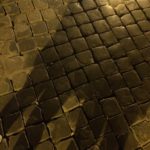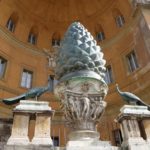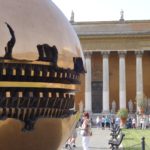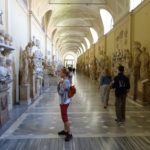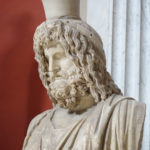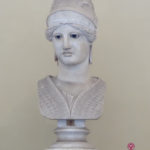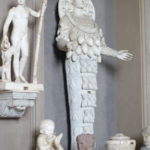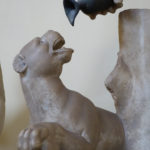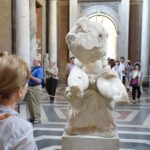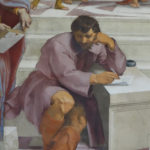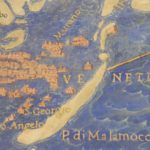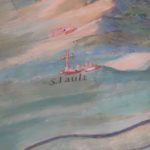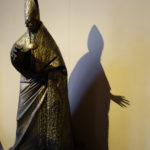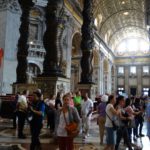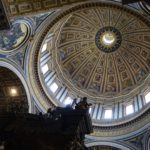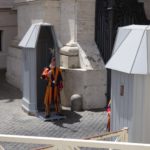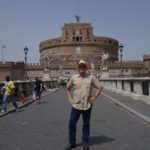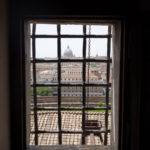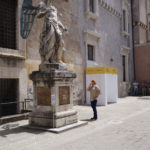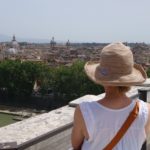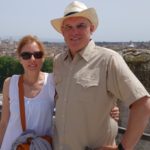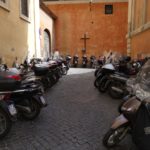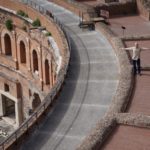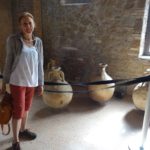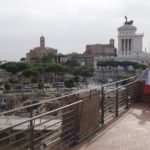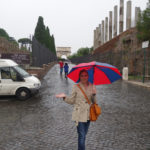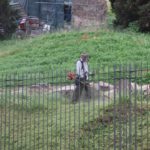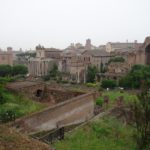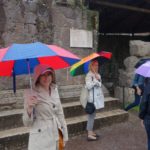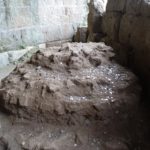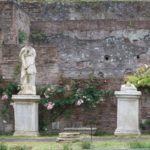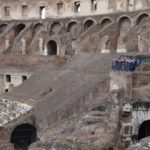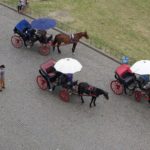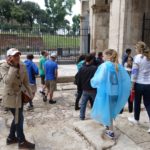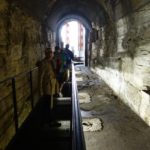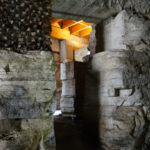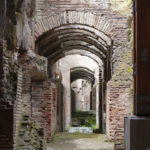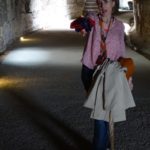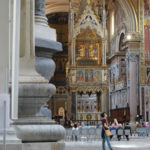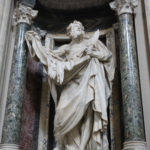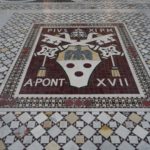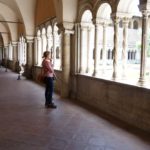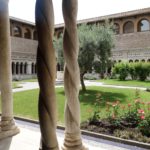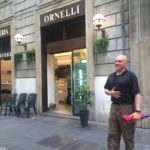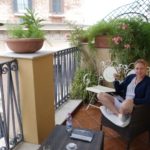As we near the end of our two weeks in Venice, we’ve been looking for things to see and do that we might not have gotten around to during a shorter visit. Here are a couple examples of what we’ve been up to after crossing most of the “must-see” sights off the list earlier in our visit.
Venetian tapas: Cicchetti
Among the oldest eateries in Venice are bacari–tiny hole-in-the-wall taverns (mostly around Rialto Bridge) that serve various small plates of finger foods, called cicchetti, accompanied by equally small glasses of cheap wine. It’s kind of like tapas, but with a distinctively Venetian, rather than Spanish, accent. After spending our first week here gobbling down pizza, pasta, and fish in “real” restaurants, we decided last night to try this quintessentially Venetian dining option instead.
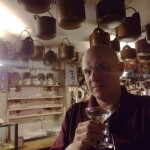
The start of our cicchetti evening.
It was drizzling out, which added to the dark and mysterious atmosphere in the first
bacaro we visited–Cantino do Mori. We ordered a couple glasses of the house prosecco, and started pointing willy-nilly at barely visible food items (or at least we hoped they were food!) displayed in the glass cases on the bartop.
Are those meatballs made of beef, pork, or something else? (Horse meat is popular in Venice, so we just ate and hoped for the best.) Is that some kind of artichoke spread on those bruschetta? (Nope, it’s anchovy paste, tasty but crunchy with bones and heaven knows what else.) We were beginning to understand why they keep the lights down so low–if you can’t figure out what it is until it’s in your mouth, then you’re already pretty much committed.
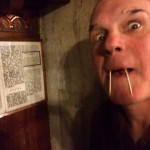
The end of our cicchetti evening.
Undaunted, we decided to try another cicchetti bar right around the corner, Osteria ai Storti. It was even smaller than Cantino do Mori, but brightly lit. This time, we were better (or at least luckier!) with our selections. Fried olives were salty and delicious, and the artichoke frittata was also tasty. We decided not to push our luck any further, and headed back to the apartment.
The final verdict? Eating cicchetti made for a fun evening that we’ll remember for a long time, and it was great to participate in a Venetian dining experience stretching back to before Columbus’s journey to America (Cantina do Mori opened in 1462). But in all honesty, the culinary highlight of our night was the gelato we had on the way home. Tomorrow it’s back to pizza!
A visit to Padua
Today we decided to leave the surreal environment of Venice for a day in nearby Padua (or Padova, if you’re looking at an Italian map). However you spell it, it’s a major university city about 30 minutes by train from Venice. Emerging from the train station, it was strange to see (and smell and hear) car traffic for the first time in 11 days.
Our first stop was the historic city center, with open markets selling everything from clothes and jewelry to fruits, spices, and meat. We bought a few small items–mostly gifts for friends back home–but I think we disappointed the vendors by not dickering. I guess after all this time in super-expensive Venice, even the marked up starting prices in Padua seemed incredibly cheap!
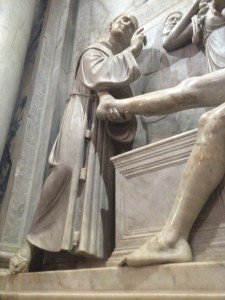
It’s nice of St. Anthony to help find lost items (like this guy’s detached foot) but his expression seems to suggest he’ll bust your chops about it.
Our next stop was the Basilica of Saint Anthony. If you know your saints–and after a couple weeks staring at Italian art, many of them are starting to feel like family to us–then you’re probably aware St. Anthony is the patron saint of lost items, handling prayers for everything from misplaced car keys to missing pets.
In an ironic twist, we actually had trouble finding the church. Yes, we got lost on the way to the cathedral dedicated to the saint who deals with lost items. (It’s only the biggest building in Padua, but there’s no need to rub that in.) We did eventually find our way there, and found it to be a pretty amazing place.
It’s emotional to watch pilgrims from all over the world weep at Anthony’s tomb as they ask him to answer their prayers. And it’s disgusting to see Anthony’s 900-year-old, semi-preserved tongue, jaw, and vocal cords in the reliquary. At least the peaceful cloister garden is right next door, where you can stare at the pretty magnolia flowers while you try to get the image of Anthony’s deconstructed mouth out of your head.
After a great lunch (yes, we somehow still had appetites) in the main city square, we hurried to make our 3:00 appointment at the Scrovegni chapel, where late-Medieval (or early Renaissance, depending on how you keep score) artist Giotto’s amazing frescoes are displayed.
Even in a country known for needlessly complex bureaucracy, getting in to see Giotto’s masterpiece requires an amazing level of commitment and patience. First, you need to book your appointment at least 24-hours beforehand. Then you need to pick up your actual tickets at the box office one hour before your scheduled visit. You’ll need that hour to navigate the poorly signed route across the museum campus, because you absolutely must be at the door to the chapel no more than 15, and no less than 5, minutes before your appointment.
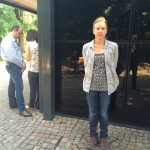
Waiting outside the airlock for our 15 minutes with Giotto.
You’re not done yet. Before you get into the chapel, you need to enter an antechamber via an airlock (I’m not kidding!) and watch a 12 minute orientation film. Then, finally, you’re allowed into the chapel for exactly 15 minutes before being escorted back out via a different airlock.
All this is nominally to protect the brilliant colors of the frescoes, but it also serves to add a luster of exclusivity to the entire experience. Frankly, after all the rigamarole to get in, the chapel itself could have contained just a bad stick-figure drawing of a teary-eyed clown and I’d still have felt grateful for the opportunity to personally witness such a staggering masterpiece.
But the frescoes actually were pretty darn amazing. And, when our 15 minutes were up, we caught our train back to Venice where we knew exactly how to find that gelato shop ready to put another tasty exclamation point on the end of our day.
